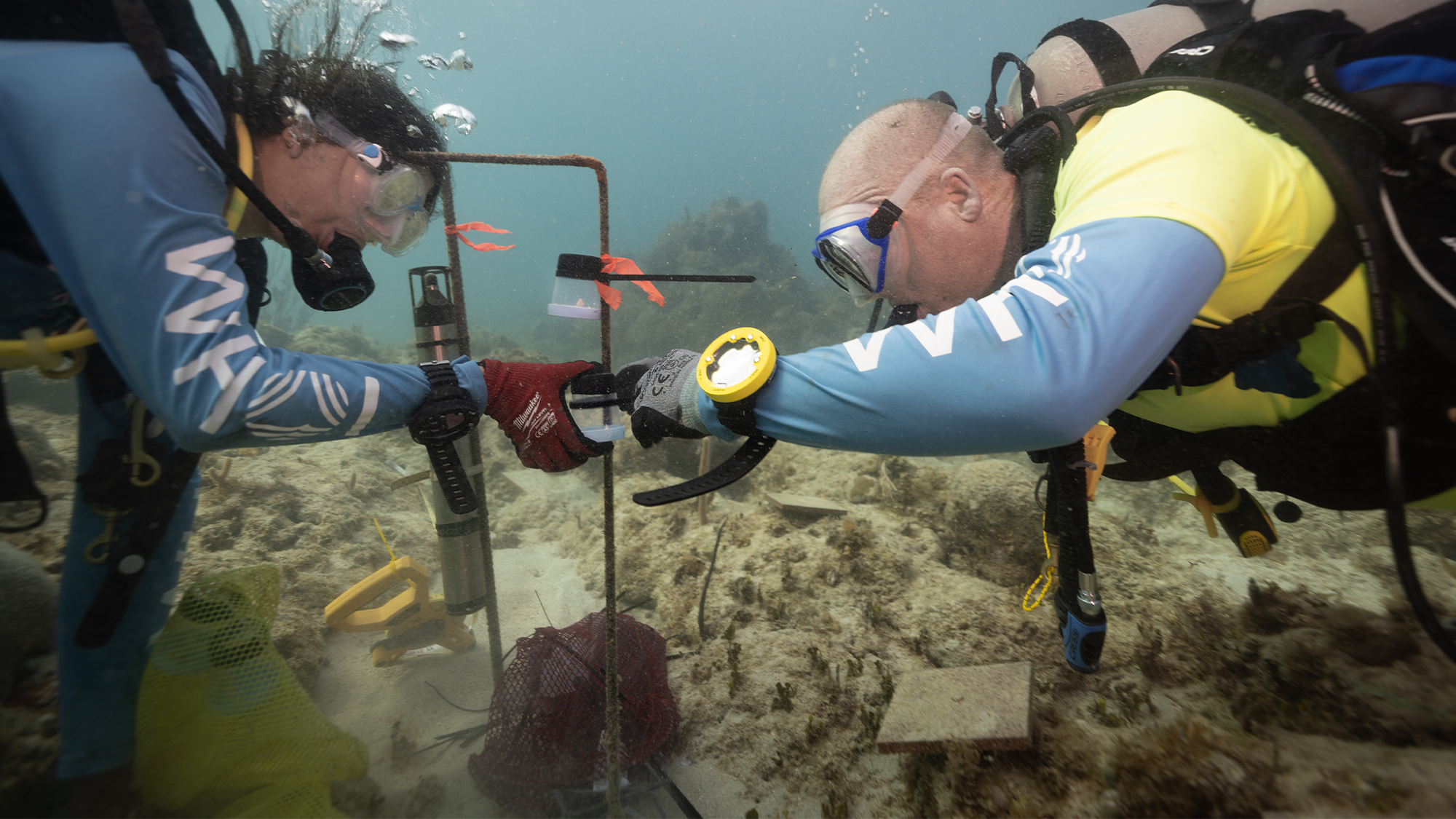

Healthy reefs are known as vibrant homes for colorful corals and fish.. As with any bustling ecosystem, they have their own sounds and can be quite noisy. The purrs, croaks, and grunts of fish and crustaceans that live there and the sounds of healthy coral growing can echo through the water. Larval animals may use some of this sound to help them determine where to put down roots or when it’s time to grow. Broadcasting these healthy coral reef sounds may encourage coral larvae to recolonize degraded or damaged coral reefs. The findings are detailed in a study published March 13 in the journal Royal Society Open Science.
One shot to settle down
As adults, corals are immobile. Their larval stage is their only chance to move around and find that perfect habitat. They swim or drift with the currents to find the right conditions to settle down and then anchor themselves to the seabed. Earlier studies have shown that chemical and light cues can help influence that decision, but this new work looked at the role that sound may have. They likely can sense these vibrations, since corals don’t have traditional ears.
[Related: Google is inviting citizen scientists to its underwater listening room.]
“What we’re showing is that you can actively induce coral settlement by playing sounds,” Nadège Aoki, a study co-author and a doctoral candidate at Woods Hole Oceanographic Institution (WHOI), said in a statement. “You can go to a reef that is degraded in some way and add in the sounds of biological activity from a healthy reef, potentially helping this really important step in the coral life cycle.”
Reef soundscapes
To look closer, a team of researchers conducted experiments in the US Virgin Islands in June and July 2022. They collected larvae from a hardy coral species named Porites astreoides. It is more commonly known as mustard hill coral, due to its yellow color and lumpy shape. They distributed the larvae along three reefs along the southern coast of St. John. Of these reefs, Tektite is relatively healthy. Cocoloba and Salt Pond are more degraded, having fewer fish and less coral cover.

The team installed an underwater speaker system at the Salt Pond reef and placed cups of larvae at distances of 3.2, 16.2, 32.8, and 98.4 feet from the speakers. For three nights, they then played healthy reef sounds at Salt Pond that were recorded at Tektite in 2013. They also set up similar installations at Tektite and Cocoloba, but did not play any of the recorded reef sounds.
After collecting the cups, they found that significantly more coral larvae had settled in the cups at Salt Pond than the other two reefs. The larvae settled there an average of 1.7 times higher in the enriched sound environments than in the ones that were not. The cups that were about 16 feet from the speakers saw the highest rate of larvae settlement, but even the cups that were almost 100 feet away had more larvae settling at the bottom than those where the sounds were not played.

“The fact that settlement is consistently decreasing with distance from the speaker, when all else is kept constant, is particularly important because it shows that these changes are due to the added sound and not other factors,” study co-author and WHOI marine biologist Aran Mooney said in a statement. “This gives us a new tool in the toolbox for potentially rebuilding a reef.”
One thing that surprised the team was that there was not a large difference between the settlement rates at the more-degraded Cocoloba and the healthier Tektite reefs. A 2018 study found higher settlement rates at Tektite than Cocoloba, which may be due to natural variations. However, the Tektite reef has recently seen destructive hurricanes, a significant bleaching event, and even an outbreak of coral disease.
“We seem to have lost some of the complexity of Tektite’s soundscape over the last decade,” Aoki said. “It could be that conditions there are not as good as we thought they were, but we don’t know for sure.”
A potentially new reef restoration tool
According to the authors, a potential drop in settlement rates at Tektite shows just how severe the threats coral reefs are facing are and they need rapid, scalable solutions. Coral reefs protect the coast from storm waves and erosion, provide tourism and food opportunities for millions of people, and support at least 25 percent of all marine life. By some estimates, the planet has lost half of its coral reefs in the past 30 years.
[Related: Sandy ‘Reef Stars’ help bring life back to coral reefs hurt by dynamite fishing.]
The team hopes that this work can help inform future coral restoration efforts. Using enhanced soundscapes may be used to increase settlement rates in coral nurseries or be passively broadcast at reefs in the wild. They would still need to be monitored by humans, but would be a relatively easy restoration prowess to implement.
“Replicating an acoustic environment is actually quite easy compared to replicating the reef chemical and microbial cues which also play a role in where corals choose to settle,” study co-author and WHOI microbial ecologist Amy Apprill said in a statement. “It appears to be one of the most scalable tools that can be applied to rebuild reefs, so we’re really excited about that potential.”
